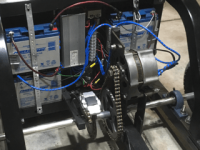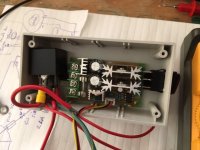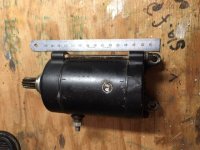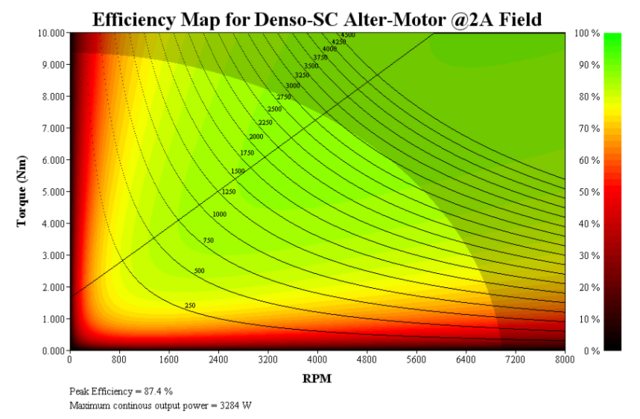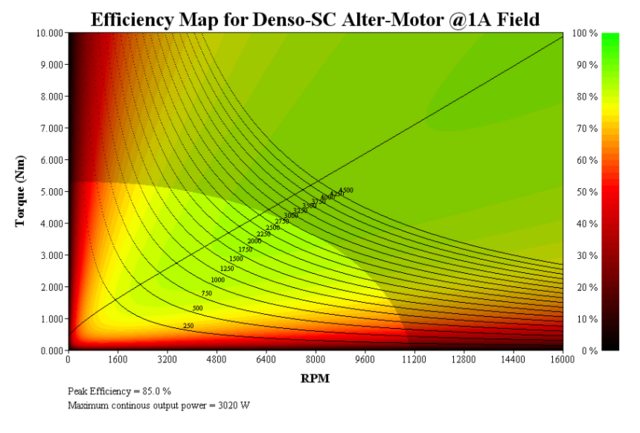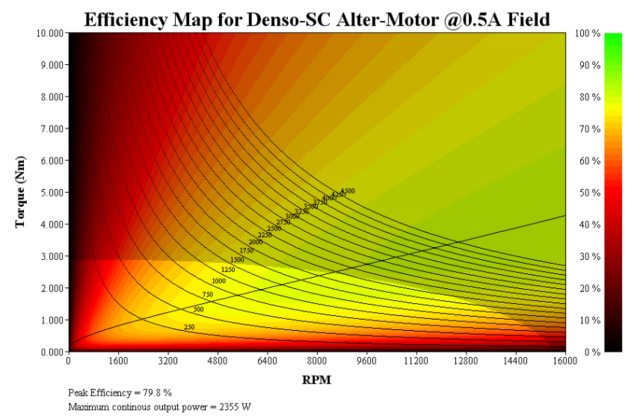I got the batteries on ebay, not going to link it though because I'm pretty sure the spec was overstated. There are plenty to choose from on ebay but it would be worth hunting out reputable suppliers as batteries on ebay are a minefield, $200 should get enough power for at least a few minutes of full power testing.
RC LiPo info can be a little confusing, typically something like "3S 30C 5000ma/hr". They're pouch type cells and that means 3 pouches in Series, max discharge 30x Capacity and 5000 milliamp hour or 5A/hr capacity.
The pouches are rectangular with a nominal voltage of about 3.85v so 3 in series would be 11.5v.
30C would be 30x5A/hr so 150A maximum but that figure can be tricky, it could be for just 30 seconds or even just 1 or 2. The packs continuous rating is the main thing to look for and it should be well above the current you need, 2 or 3 times or more if possible.
5000ma/hr is probably about the minimum to get any kind of run time, probably only be a few minutes but it's no problem to add more packs in parallel later, all going well it would probably be better to move to 18650 cells at that point. I went with a couple of 6S 6000ma/hr packs, about 24v in series or 48v in parallel and that worked out well but in hindsight 4x 3S (12v) would have been better, I've never needed 12v or 36v but it would be nice to have the option.
Those packs need a special balance charger, I got an Imax B6AC, cheap and cheerful, maybe a little slow for high capacity packs so it might have been worth getting 2 or a more upmarket charger. Mine is a clone (most available are clones) and it's been 100% so far but some folks have balance voltage issues with them. BMSs are worth looking into early on and may be good to use instead of a balance charger, they'd be needed for 18650s anyway so nothing lost.
It sounds like you got a good deal on the controller, you should be able to push it up to full current and might find it's enough. If it holds up ok and you want more power then it would probably be better to go with a higher current model from the same supplier than with an RC ESC. I've been impressed with the RC ESCs so far, loaded them up as hard as I can to see what they'll hold up to but every application is different and they just don't have the bulk of a purpose built controller, get them in a state where they're heating up and they couldn't take it for long.
I tried to find the vid that got me interested in alternators, an eastern European loony with a Kart but it looks like it's gone from youtube. Impressively quick and it was very hard to believe a couple of batteries no bigger than a bag of sugar could put out so much power and the whole system could be built for less than $300, turned out to be true



